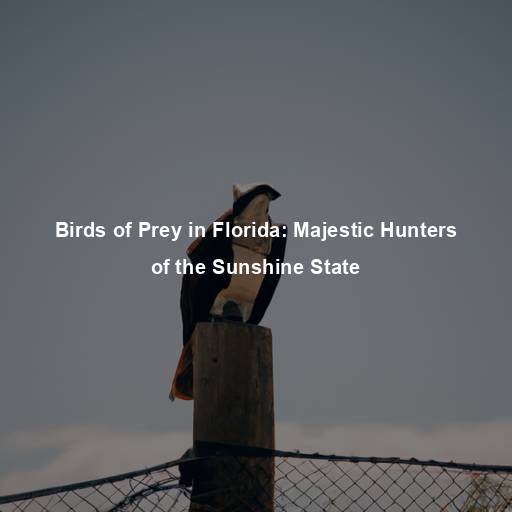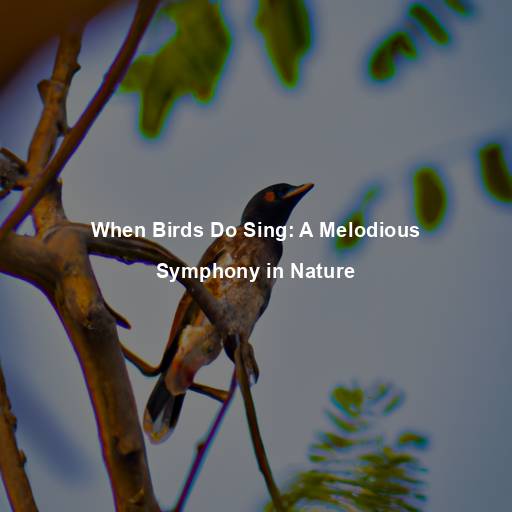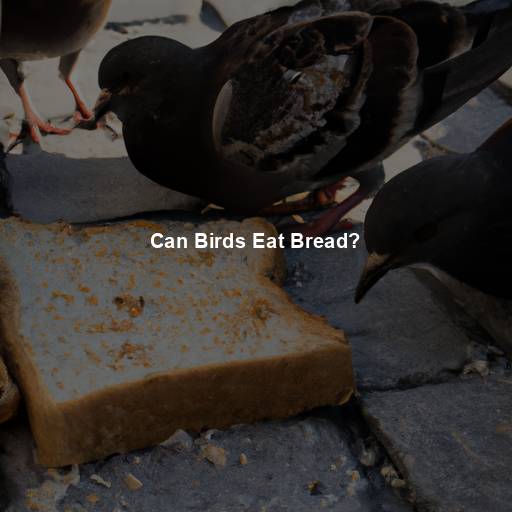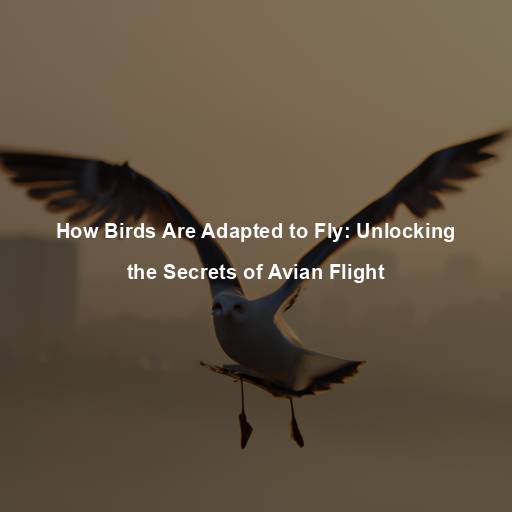Exploring the Yellow Birds of the UK
Last Updated on November 7, 2023 by Evan
Contents [hide]
- 1 The Vibrant World of Yellow Birds
- 1.1 Why Are Some Birds Yellow?
- 1.2 The Yellowhammer – A Symbol of the Countryside
- 1.3 The Goldfinch – A Delicate Beauty
- 1.4 The Yellow Wagtail – A Splash of Color
- 1.5 The Great Tit – A Yellow Amongst Blues
- 1.6 The Common Chiffchaff – A Melodious Migrant
- 1.7 The Eurasian Siskin – A Taste for Conifer Seeds
- 1.8 The Northern Wheatear – A Symbol of Summer
- 1.9 The European Serin – A Canary in the Wild
- 2 Appreciating the Yellow Splendor
- 3 Celebrating Yellow Diversity
- 4 FAQs – What UK Birds are Yellow?
- 4.1 Are there any yellow birds in the UK?
- 4.2 Which bird species in the UK are predominantly yellow?
- 4.3 Are there any larger yellow birds found in the UK?
- 4.4 Do any birds turn yellow seasonally in the UK?
- 4.5 Are there any distinct yellow migratory birds in the UK?
- 4.6 Are there any other bird species with yellow accents?
- 4.7 Do all yellow birds in the UK have the same shade of yellow?
- 4.8 Where can I observe yellow birds in the UK?
The Vibrant World of Yellow Birds
The natural world never ceases to amaze us with its boundless wonders, and when it comes to the captivating realm of avian creatures, our fascination knows no bounds. Nestled amidst the lush landscapes of the United Kingdom, a dazzling array of feathered marvels awaits our awe-struck gaze. With a kaleidoscope of brilliant colors and enchanting melodies, these winged wonders truly bewilder the mind and stir the soul. Today, dear readers, we embark on a mesmerizing expedition to unravel the secrets of the UK’s enigmatic yellow birds – a flamboyant group that serenades the skies with their resplendent plumage.
Why Are Some Birds Yellow?
The striking yellow coloration displayed by certain birds serves various purposes in their lives. While it may seem purely aesthetic to our eyes, it plays essential roles in their survival and everyday activities. For instance, the bright yellow plumage can act as a visual signal to attract mates during the breeding season. It signifies vitality, health, and the ability to provide for offspring.
The Yellowhammer – A Symbol of the Countryside
One of the most iconic yellow birds of the UK is the Yellowhammer (Emberiza citrinella). Known for its vibrant yellow feathers, marked with reddish-brown streaks, this charming bird is often associated with the rural landscapes of the British countryside. With its distinctive “a-little-bit-of-bread-and-no-cheese” song, the Yellowhammer fills the air with its melodious tunes, adding a touch of magic to our surroundings.
The Yellowhammer thrives in open farmlands, hedgerows, and mixed woodlands across the UK. Its diet mainly consists of seeds, insects, and spiders, making it a valuable ally in controlling pest populations. Sadly, the Yellowhammer’s population has been in decline due to changes in agricultural practices, making conservation efforts crucial to protect this beloved symbol of the countryside.
The Goldfinch – A Delicate Beauty
In gardens and parks throughout the UK, the Goldfinch (Carduelis carduelis) graces us with its elegance and vibrant yellow plumage. This charming bird, adorned with black and white markings and a striking red face, captivates both bird enthusiasts and casual observers alike. Its delightful and melodious twittering adds a cheerful atmosphere to any outdoor space.
Goldfinches, those enchanting birds with their vibrant plumage, possess an intriguing penchant for open landscapes that teem with life. Lush meadows, sprawling grasslands, and blooming gardens adorned with thistle and teasel plants become their haven. Their beak, a marvel of evolution, is perfectly designed for the extraction of seeds, particularly those nestled within thistles, thus bestowing upon these prickly plants an indispensable role as a vital sustenance for their very existence. Furthermore, these feathered wonders are not solitary beings, but rather harmonious comrades, forming tightly knit flocks that traverse the vast expanse of the heavens, their shared flights fostering a profound sense of camaraderie and companionship.
The Yellow Wagtail – A Splash of Color
When it comes to birds that truly embody the color yellow, the Yellow Wagtail (Motacilla flava) takes center stage. With its bright lemon-yellow plumage and contrasting black and white markings, this energetic bird is a true spectacle to behold. As its name suggests, the Yellow Wagtail is renowned for its distinctive wagging tail, adding a playful element to its already captivating presence.
As graceful as wind itself, these feathered acrobats thrive in the realms of wetlands, where they seek solace amidst marshes, riverbanks, and dew-kissed meadows. A culinary connoisseur, their palate dances with a medley of insects and invertebrates, swiped skillfully from mid-air or snatched on stealthy tiptoes along the water’s edge. But it is their enigmatic nature, their unruly urge to traverse great oceans and boundless lands, that captivates our hearts, weaving awe through their journeys that connect worlds, their little wings painting trails of yellow wonder with each defying flight.
The Great Tit – A Yellow Amongst Blues
The Great Tit (Parus major) is a fascinating creature, known for its iconic blue and yellow feathers. But did you know that this remarkable bird also deserves a spot on our list of magnificent yellow avian beings? Sporting a stunning yellow breast and a captivating black head, this charming visitor brings a burst of delight to garden enthusiasts all over the United Kingdom. Whether it’s their cheerful melodies or their acrobatic displays, these feathered friends never fail to perplex and captivate us, making them perfect companions in our cherished outdoor havens.
The magnificent Great Tits are masters of adaptation, gracefully navigating a wide array of habitats, from lush woodlands to charming suburban gardens. Their eclectic palate knows no bounds, as they feast upon an assortment of delicacies, including insects, seeds, and even petite vertebrates. Astonishingly resilient in the face of urbanization, these remarkable avian creatures have effortlessly integrated into our bustling cities, showcasing their unrivaled ingenuity and unwavering resolve to flourish amidst the unpredictable tapestry of our ever-evolving world.
The Common Chiffchaff – A Melodious Migrant
The Common Chiffchaff (Phylloscopus collybita) is a small, insectivorous bird that enchants us with its beautiful yellow-toned plumage. As one of the earliest migrants to arrive in the UK, its arrival signifies the arrival of spring and the awakening of nature after the cold winter months. Its repetitive and melodious “chiff-chaff” song fills woodlands and gardens, bringing a sense of renewal and joy to all who listen.
These delightful birds have a preference for woodlands, hedgerows, and parks, where they can find an abundance of insects to fuel their high-energy lifestyle. Their small size and agile nature allow them to navigate through foliage with ease, as they tirelessly search for their next meal. The Common Chiffchaff’s presence serves as a reminder of the beauty and resilience of migratory birds, as they embark on incredible journeys to find suitable breeding grounds.
The Eurasian Siskin – A Taste for Conifer Seeds
Step into the enchanting world of our coniferous forests and prepare to be captivated by the mesmerizing Eurasian Siskin. With its vibrant plumage painted in hues of yellow and green, interlaced with delicate black streaks, this little finch is a true masterpiece of nature’s artistry. During the breeding season, the male Siskin unveils a bolder, more resplendent yellow, casting a spell on both potential mates and avid birdwatchers alike. Soak in the burst of colors and marvel at the bewildering allure of this elusive winged wonder.
These charming birds are primarily found in coniferous woodlands, where they feed on the seeds of various conifer species. Their slender beaks are perfectly adapted for extracting seeds from pine cones, allowing them to access a valuable and abundant food source. The Eurasian Siskin’s ability to thrive in coniferous habitats showcases their remarkable adaptability to specific environments.
The Northern Wheatear – A Symbol of Summer
As anticipation for the imminent arrival of summer grows, birds of wonder grace the fields of the UK. Among them is the enchanting Northern Wheatear, bringing with it a burst of color and charm. With a captivating combination of black, white, and a hint of yellow, this migratory species is truly a sight to behold. The majestic male Wheatear steals the show with its vibrant yellow plumage, a dazzling display that contrasts strikingly against its black wings, tail, and alluring face mask.
In the mystical land of open landscapes, the majestic Northern Wheatears rule with their presence. From moorlands to coastal cliffs, these creatures find solace in the beauty of untouched realms. With tails gracefully bobbing up and down, they captivate observers and leave them wondering about the secret dances of nature. As the seasons shift, these enchanting birds bid farewell to the UK, embarking on an extraordinary odyssey to their wintering grounds in the intriguing continent of Africa.
The European Serin – A Canary in the Wild
The European Serin (Serinus serinus) is a small finch species that brings a touch of sunshine to our woodlands and parks. While its overall appearance may be subtle, with a mix of yellow, green, and gray feathers, its yellowish breast and face add a delightful burst of color. Their cheerful and melodious song fills the air during the breeding season, announcing their presence to potential mates and bird enthusiasts.
In the realm of woodlands, parks, and gardens, a delightful avian species reigns supreme – none other than the captivating European Serin. Its enchanting presence is woven into the very tapestry of these diverse habitats, manifesting in its insatiable craving for a medley of seeds and insects. Remarkably, this charismatic creature has not limited its domain to the realms of nature alone; it has maneuvered into the urban fray, thriving amidst the ever-shifting landscapes molded by human artistry. In observing the European Serin’s tenacity, we are reminded of nature’s ability to bewilder and adapt, leaving us in a state of perpetual awe.
Appreciating the Yellow Splendor
Behold the breathtaking allure of the UK’s diverse yellow avian community! These captivating creatures shower our lives with bursts of colors and choruses of melodies, filling our hearts with awe and intrigue. From the resplendent Yellowhammer to the exquisitely fragile Goldfinch, each species holds a tale of its own, weaving into the intricate tapestry of our ecological ecosystem. Let us embrace the enigmatic wonder of these avian wonders while also recognizing the pressing need to safeguard their homes and protect their irreplaceable presence in nature’s majestic repertoire.
The Yellow Bunting – A Hidden Gem
As our journey takes us deeper into the captivating realm of British yellow birds, we stumble upon an enigmatic treasure: the Yellow Bunting, scientifically known as Emberiza sulphurata. This elusive winged wonder, although not as widely recognized as its feathered peers, exudes an air of mystique and intrigue that is bound to captivate any observer. Adorned with a radiant coat of yellow, interlaced with delicate dashes of darkness, the Yellow Bunting stands as a testament to the intricate beauty woven by Mother Nature herself.
Yellow Buntings favor open habitats with dense vegetation, such as reed beds, wetlands, and coastal marshes. They are skilled at concealing themselves amidst the tall grasses and reeds, making it challenging to spot them. Their distinctive song is characterized by a series of melodious whistles and trills, adding an element of enchantment to their already captivating nature.
The Yellowhammer’s Decline – A Call for Conservation
As we reflect on the vibrant beauty of the Yellowhammer, it becomes imperative to unravel the complex tapestry of challenges this beloved bird confronts. The inescapable truth is that our emblematic winged companion has endured a perplexing decline in its population, a somber consequence of the shifting tides in agricultural practices. The dissipation of hedgerows, accompanied by the capricious alterations in crop management and the encroaching presence of pesticides, collectively weave a disheartening narrative of dwindling nesting grounds and vanishing foraging havens for these feathered marvels.
The awe-inspiring symphony of nature’s virtuosos, the Yellowhammers, beckons us to immerse ourselves in a whirlwind of conservation endeavors. Through a harmonious dance of nurturing wildlife-friendly havens, cultivating sustainable farming practices, and illuminating the significance of these captivating creatures, our unity beseeches their preservation. Together, let us weave an ethereal tapestry where the melodious refrain of “a-little-bit-of-bread-and-no-cheese” cascades through time, captivating generations with its enchanting allure.
The Lesser Goldfinch – A Unique Subspecies
The enchanting Lesser Goldfinch (Spinus psaltria), a captivating bird native to North America, beckons our attention beyond the borders of the UK where its well-known cousin, the Goldfinch (Carduelis carduelis), holds court. While both of these avian beauties share certain likenesses, it is the Lesser Goldfinch that truly exudes its individual allure. In a burst of perplexity, this transatlantic subspecies awakens curiosity and prompts us to explore its unique charm.
Introducing the Lesser Goldfinch, a truly captivating avian beauty. Cloaked in a lavish ensemble of ebony hues on its crown, back, and feathery wings, this enigmatic creature mesmerizes the eye with a breathtaking display. Thriving in the sun-kissed southwestern pockets of the United States and Mexico, this splendid creature adapts effortlessly to diverse environments, from untamed forests to bustling cityscapes. Prepare to be enraptured by its melodic serenade and spellbinding mid-air acrobatics, for close encounters or wistful observations unveil an experience like no other.
The Yellow-Browed Warbler – A Rare Visitor
In the realm of avid bird enthusiasts, there exists a realm of both marvel and enigma. Amongst the treasures coveted by those who seek the fluttering beings lies the Yellow-Browed Warbler, a mystical creature of the skies. Originating far from the United Kingdom, this diminutive songbird takes flight on a daring journey from its secluded nesting sites in Siberia to its distant haven in the depths of Southeast Asia. Its sporadic appearances during this grand migration add a touch of unexpected marvel to an already perplexing avian realm.
There is something truly mesmerizing about these delicate little songbirds, with their vibrant yellow eyebrows that bring a burst of color to their otherwise greenish feathers. It’s during the autumn season that we are blessed with the presence of these elusive migratory birds in the United Kingdom, as they seek refuge and sustenance in our woodlands, parks, and even our own gardens. The thrill of catching a glimpse of a Yellow-Browed Warbler is like stumbling upon a hidden treasure for avid birdwatchers, reminding us of the marvels of migration and the intricate web of life that binds us all together.
The Meadow Pipit – A Yellowish Tinge
While not predominantly yellow, the Meadow Pipit (Anthus pratensis) deserves mention for its subtle yellowish tinge and its significance as a native breeding bird in the UK. These small, inconspicuous birds are often found in open grasslands, moorlands, and heathlands, where they blend with their surroundings.
Step into the enchanting world of the Meadow Pipit, a celestial fusion of earthy hues and elusive shades that adorn their feathered embody. As they gracefully dance through the gentle winds, their iridescent song cascades through the vast tapestry of their natural domain, weaving a symphony that enchants both the humblest of creatures and the mightiest of spirits. Embodying resilience beyond measure, these aerial poets hold the power to bring balance to our intricate ecosystems, acting as the vigilant guardians of insect realms and nourishing the hungered souls that dwell high above the pyramid of life.
The Yellowhammer’s Cultural Significance
Beyond its significance as a symbol of the countryside, the Yellowhammer holds cultural importance in various aspects of human life. In folklore and literature, this bird has been associated with good fortune, prosperity, and even weather predictions. Its distinctive song has inspired poets and musicians, who have sought to capture its essence in their art.
Furthermore, the Yellowhammer’s image has been used in logos, emblems, and even on postage stamps, showcasing its enduring popularity and recognition. The bird’s resilience and adaptability serve as a testament to the harmony between humans and nature, reminding us of the interconnectedness and beauty of our world.
Celebrating Yellow Diversity
As our journey into the enchanting world of the UK’s yellow birds draws to a close, a profound sense of wonder lingers within us. These feathered marvels, from the resplendent Yellow Bunting to the harmonious Yellowhammer, captivate our senses and weave an intricate tapestry of nature’s bounty. Their individual narratives carve an indelible imprint upon our collective appreciation for the rich tapestry of our natural heritage.
Birds have an undeniable ability to bewitch us, with their dazzling feathers and melodic tunes. However, their significance extends far beyond mere aesthetics. These avian wonders actively participate in the intricate web of life, contributing to crucial tasks like pollination, seed dispersal, and insect regulation. Their presence is an indispensable asset, ensuring the equilibrium and well-being of our delicate ecosystems.
In a world bursting with diverse avian wonders, it falls upon us, as ardent admirers of feathered marvels, to embrace the mantle of stewardship. Our collective duty demands that we rally behind conservation initiatives, fostering habitats that sing in harmony with our most treasured species. By igniting awareness and kindling a fervor for these glorious yellow-hued beings, we pave the way towards their uninterrupted presence and flourishing in the tapestry of the United Kingdom.
So, the next time you venture into nature or simply gaze out of your window, take a moment to embrace the yellow wonders that grace our world. Their presence is a reminder of the beauty, resilience, and interconnectedness of all living beings. Let us celebrate and cherish these feathered marvels, for they bring us closer to the profound magic of the natural world.
FAQs – What UK Birds are Yellow?
Are there any yellow birds in the UK?
In the vibrant tapestry of avian inhabitants in the United Kingdom, a whimsical array of yellow-hued creatures grace our skies. While their presence may not be as prolific as their counterparts bedecked in different shades, these sunny specimens add a dash of effervescence to our nation’s ornithological panorama. From dappled meadows to shimmering lakes, one may spy these delightful feathered companions adorning the diverse landscapes of our beloved isles.
Which bird species in the UK are predominantly yellow?
In the realm of feathered wonders that grace the United Kingdom, the Yellowhammer, with its resplendent yellow plumage, reigns supreme. These splendid finches, known for their wide distribution, have carved a special place in the avian universe. Equally enchanting are the Willow Warbler and Western Bonelli’s Warbler, warbler species that boast hints of yellow in their enchanting melodies.
Are there any larger yellow birds found in the UK?
Have you ever laid eyes on the captivating European Goldfinch (Carduelis carduelis)? This marvelous species, slightly larger in size, graces the landscapes of the United Kingdom with its presence. Adorned in a spellbinding array of vibrant yellow, jet-black, and fiery red feathers, these finches possess an unmistakable allure that sets them apart from their avian counterparts.
Do any birds turn yellow seasonally in the UK?
Intriguingly, it has been observed that certain avian inhabitants of the United Kingdom undergo a fascinating chromatic transformation in accordance with the changing seasons. Take, for instance, the distinguished Eurasian Bullfinch (Pyrrhula pyrrhula), an avian duo known to sport a yellowish plumage during their reproductive phase. Curiously, the saturation of their resplendent hue exhibits a remarkable diversity among individuals, sometimes lacking the vibrant intensity that characterizes its fellow yellow-feathered avians.
Are there any distinct yellow migratory birds in the UK?
Yes, the Yellow Wagtail (Motacilla flava) is a migratory bird that visits the UK during the spring and summer. These small birds have predominantly yellow plumage with a touch of green on their upper parts. They can often be found near water bodies, such as rivers or ponds.
Are there any other bird species with yellow accents?
Discover the fascinating world of avifauna in the United Kingdom, where birds don’t hesitate to flaunt their unexpected pops of color. In an enchanting twist, certain species showcase remarkable yellow accents, proving that nature is a true master of surprise. Take the Common Chiffchaff, whose delicate legs boast a captivating shade of yellowish-green, or the European Serin, with its wings adorned in vibrant yellow patches. These delightful bursts of color add a distinctive touch to these winged wonders, leaving us in awe of their captivating allure.
Do all yellow birds in the UK have the same shade of yellow?
Birds, fascinating creatures that they are, showcase a mesmerizing variety of yellow hues. From brilliant and vibrant shades to subtler, more lackluster tones, the yellow palette knows no bounds when it comes to our feathered friends. It’s captivating to observe how these colors can evolve, influenced by factors like gender, age, and even the magical time of breeding season.
Where can I observe yellow birds in the UK?
Yellow birds can be observed in various habitats across the UK, including woodlands, gardens, parks, and open countryside. Paying attention to areas with suitable food sources, shrubs, and trees can increase your chances of spotting these birds. Bird reserves or nature reserves can also offer excellent opportunities to see a variety of bird species, including those with yellow plumage.
Please note that the presence and visibility of yellow birds can vary depending on the specific location and time of year.






